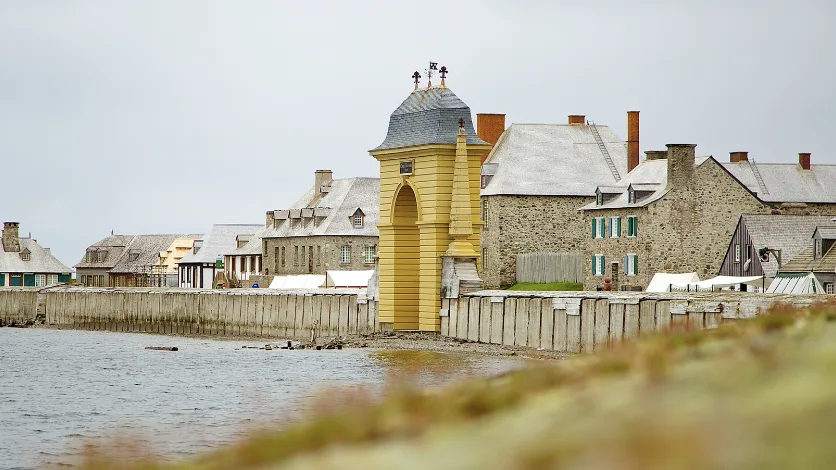
Rising sea levels threatening 300-year-old French fortress in Nova Scotia
The largest historical reconstruction project in North America, which is located in Cape Breton, Nova Scotia, is facing increasing threats from rising sea levels.
French colonialists established the Fortress of Louisbourg in 1713 in Cape Breton, Nova Scotia and became a major shipping port and city where several thousand people lived by the mid-1700s.
The fortress was later dismantled in 1760 by British colonialists, but some of the structure survived and was designated a National Historic Site in 1920. The site has become a tourist destination and is now the largest historical reconstruction project in North America, but rising sea levels are having increasingly damaging impacts on the fortress’s infrastructure.
The waters around the National Historic site are rising due to climate change, and when a storm hits, staff at the fortress brace for impact. Powerful waves have stripped wood from the site’s exterior and flooding is occurring more frequently.
In November of 2018, a large storm surge coupled with a high tide breached the Quay Wall.

Waves crash into the Quay Wall at the Fortress of Louisbourg in Louisbourg, Nova Scotia during a November storm in 2018." Credit: Ian Harte/ Parks Canada
"We had up to three feet of water in the lower end of town, so that went into the basements of the buildings, it flooded out all the ponds and all the ecologically sensitive areas around the site,” said Duggan Kennedy, Parks Canada Project Manager to The Weather Network.
“We're looking at more and more damage."
According to Kennedy, sea levels have risen roughly one metre at the site since the early 1700s. The federal government has invested $9.2 million to help safeguard the fortress from the climbing ocean and experts hope that increasing the height of the Quay Wall will shelter the fortress from increasingly tall and violent waves and reduce the chance of flooding.
Watch the video above to see my visit to one of the oldest historical sites in Canada and the strategies the fortress is using to adapt to the changing climate.
Thumbnail credit: Parks Canada












